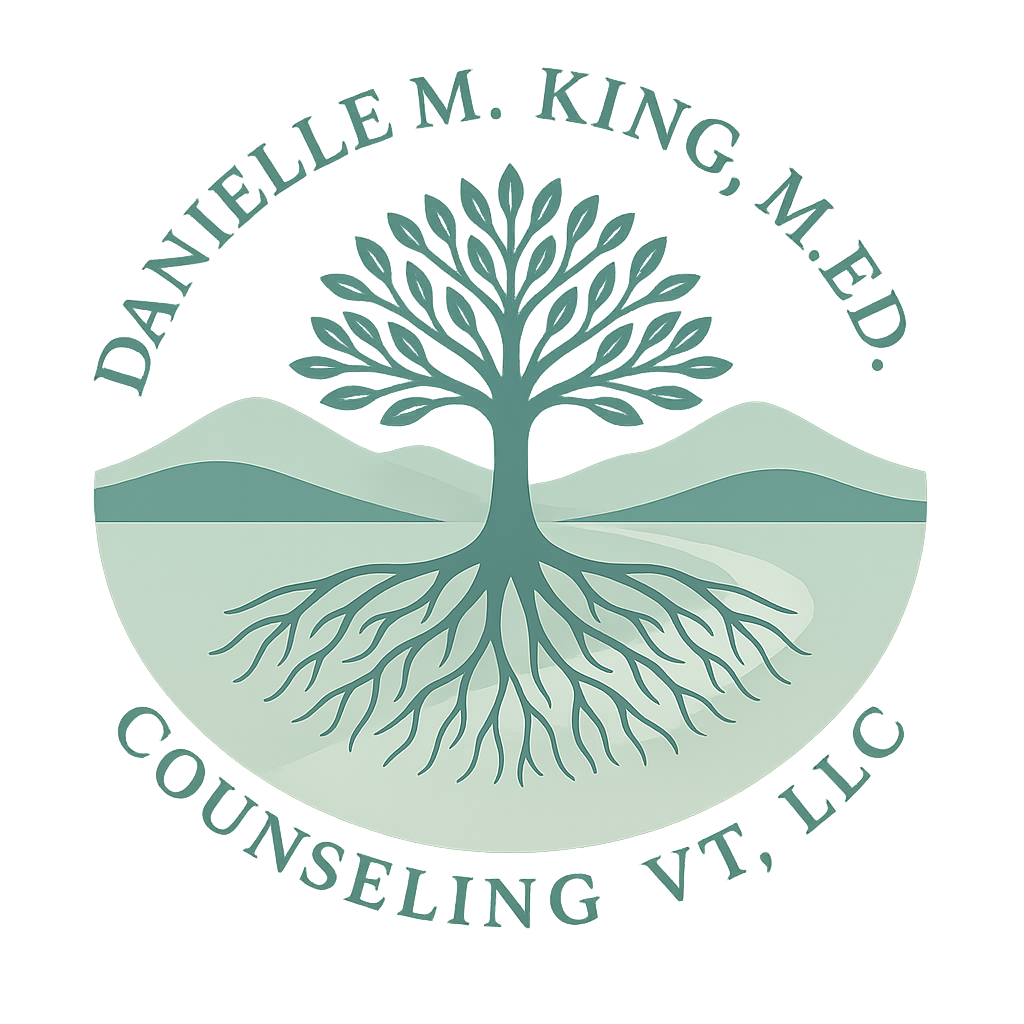What Is Self-Led Parenting
By Danielle King, M.Ed., Counseling VT, LLC
Parenting brings out every part of us—the tender, the fierce, the reactive, the tired. One minute, we’re calm and grounded. The next, we’re overwhelmed by our child’s big emotions, our own unmet needs, or a part of us that feels like it’s failing.
If you’ve ever felt this way, you’re not broken—you’re human. And you’re not alone.
One of the most transformative approaches I’ve encountered in both my personal and professional life is something called Self-led parenting, rooted in the Internal Family Systems (IFS) model developed by Dr. Richard Schwartz (Schwartz, 2001).
Parenting From the Inside Out
IFS teaches that we are made up of parts—inner voices, emotions, and patterns that try to help us feel safe, loved, and in control. But we’re also more than our parts. At our core, each of us has a Self—a calm, compassionate, curious place that can lead with intention.
Self-led parenting is about learning to respond from this grounded, inner leader instead of reacting from our overwhelmed parts.
“All parts are welcome.”
What It Looks Like
When you’re in Self, parenting might sound like:
“I’m feeling triggered, and I need a moment before I respond.”
“I wonder if a scared part of you is showing up right now. Let’s talk to it together.”
“I don’t like the behavior, but I love you. Let’s figure this out.”
Self-led parenting doesn’t mean being calm all the time. It means noticing when we’re not—and choosing to lead from connection rather than control.
Parenting From Parts (And Why That’s Okay)
We all have parts that show up in parenting:
A Fixer that jumps in before our child can struggle
A Wounded Inner Child that feels rejected when our kid pulls away
A Perfectionist who panics when the morning routine goes off the rails
These parts aren’t bad. They’re trying to protect us, often based on old wounds or outdated beliefs. But when they lead the way, our responses can feel reactive, rigid, or emotionally distant.
According to research by Holmes et al. (2023), caregivers who can stay connected to their core Self while acknowledging their internal parts report greater emotional attachment with their children and lower stress levels.
How to Begin
Self-led parenting is a practice. Here’s where you can start:
Pause before responding. Even one breath creates space.
Name your parts. “A part of me is so frustrated right now.”
Get curious. What’s this part afraid of? What does it need?
Reconnect to Self. Try placing a hand on your heart and asking, “Who’s leading right now?”
Why It Matters
Children don’t need perfect parents. They need connected ones.
Self-led parenting isn’t about controlling our children. It’s about leading ourselves so we can show up with more clarity, courage, and compassion. Self-led parenting enables us to respond to misbehavior with curiosity rather than control, and it models emotional regulation in real-time. According to Siegel & Bryson (2014), children thrive when their caregivers can stay emotionally regulated and offer what’s called “co-regulation” during stressful moments.
When we parent from Self, we help our children feel safe, seen, soothed, and eventually secure (Siegel & Bryson, 2014).
You Don’t Have to Be Alone in This
Whether you’re parenting through trauma, exhaustion, grief, or just the daily chaos of family life, know this: you don’t have to do it all perfectly. And you don’t have to do it all alone.
Self-led parenting starts with the intention to lead yourself with care—so you can show up for your child with the kind of presence that heals.
Danielle King, M.Ed.
Sources:
Schwartz, R. C. (2001). Introduction to the Internal Family Systems Model. Trailheads Publications.
Siegel, D. J., & Bryson, T. P. (2014). The Whole-Brain Child: 12 Revolutionary Strategies to Nurture Your Child’s Developing Mind. Delacorte.
Holmes, B. M., Lazar, S. W., & McLellan, H. (2023). Internal Family Systems-Based Parenting: Outcomes for Stress and Self-Compassion. Journal of Family Therapy.
